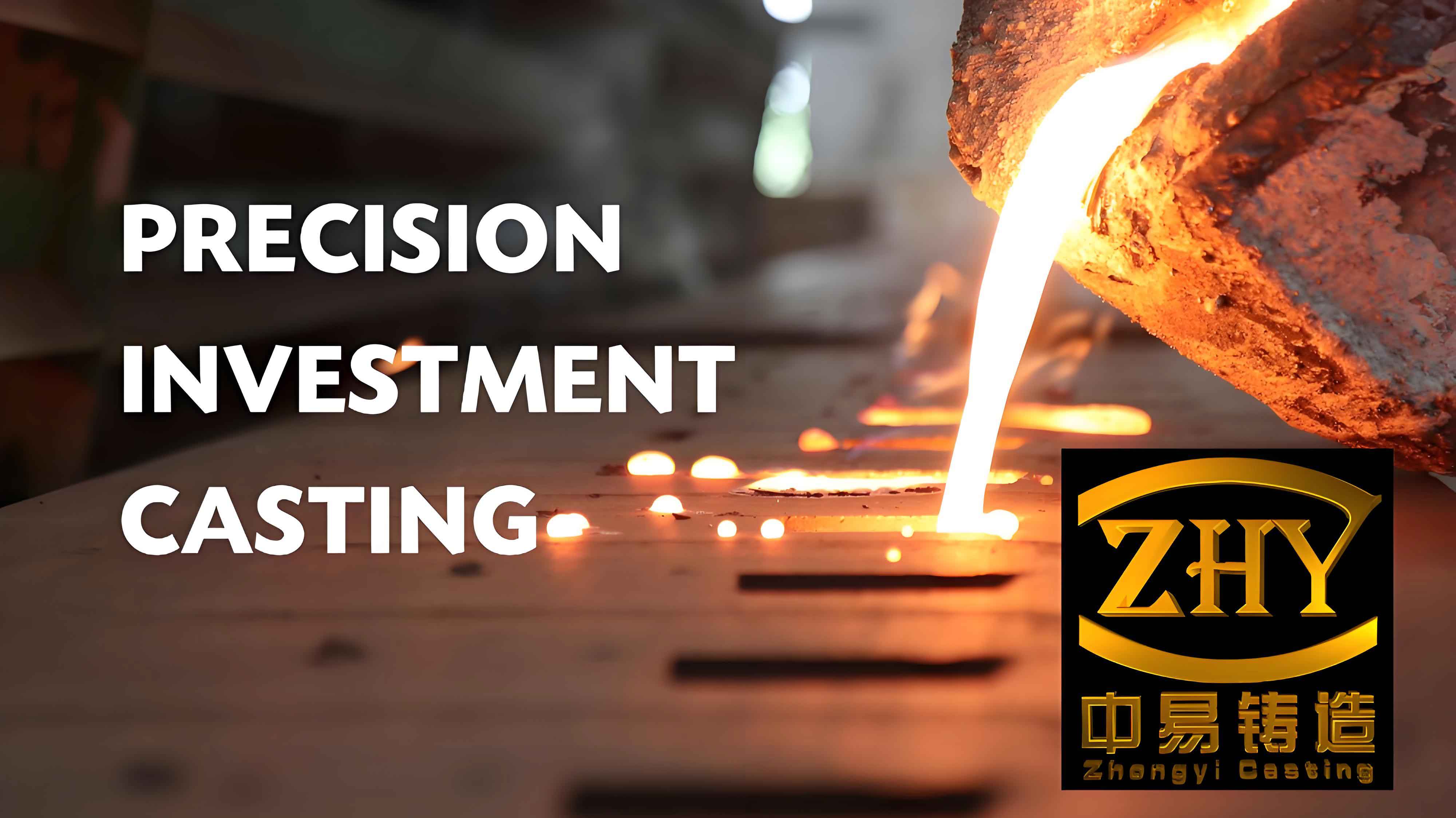As a researcher specializing in advanced manufacturing processes, I recently conducted a comprehensive study on the numerical simulation and optimization of hot tearing defects in the investment casting of IN713C alloy turbine components. This work aimed to address the persistent challenges of thermal cracking in complex turbine geometries, which are critical for automotive turbocharger applications. Below, I present a detailed analysis of the methodology, results, and practical implications derived from this investigation.

1. Introduction
Investment casting, a precision manufacturing technique, is widely employed to produce intricate components like automotive turbine blades. However, the process often encounters hot tearing defects due to uneven solidification, thermal stress accumulation, and geometric constraints. The IN713C nickel-based superalloy, known for its high-temperature strength, is particularly susceptible to such defects owing to its complex phase transformations and low ductility in the mushy zone.
This study leverages ProCAST simulation software to model the investment casting process of an IN713C turbine. The primary objectives include:
- Predicting hot tearing susceptibility through thermal-stress analysis.
- Evaluating the influence of pouring temperature and mold shell temperature on defect formation.
- Proposing optimized process parameters to mitigate hot tearing.
2. Numerical Modeling Framework
2.1 Thermal-Elastoplastic Constitutive Model
The stress-strain relationship during solidification was modeled using a thermal-elastoplastic framework. The total strain increment {dϵ}{dϵ} comprises elastic, plastic, and thermal components:{dϵ}={dϵe}+{dϵp}+{dϵT}{dϵ}={dϵe}+{dϵp}+{dϵT}
where:
- {dϵe}{dϵe}: Elastic strain increment (Hooke’s Law: {dσ}=[De]{dϵe}{dσ}=[De]{dϵe})
- {dϵp}{dϵp}: Plastic strain increment (governed by yield criteria)
- {dϵT}{dϵT}: Thermal strain increment (proportional to temperature gradient).
The material’s hardening behavior followed a linear relationship:σ=σ0+H⋅ϵpnσ=σ0+H⋅ϵpn
where σ0σ0 is the initial yield stress, HH is the hardening modulus, and nn is the strain-hardening exponent.
2.2 Hot Tearing Susceptibility Index
A critical parameter, the Hot Tearing Index (HTIHTI), was formulated to quantify defect propensity:HTI=∫tcots23ϵ˙p dt(tco≤t≤ts)HTI=∫tcots32ϵ˙pdt(tco≤t≤ts)
Here, ϵ˙pϵ˙p is the plastic strain rate, tcotco denotes the coherency time (grain contact initiation), and tsts is the solidus temperature time. Regions with higher HTIHTI values indicate greater hot tearing risk.
3. Process Parameters and Material Properties
3.1 Turbine Geometry and Gating System
The turbine component features 10 curved blades (0.7 mm wall thickness) attached to a central shaft (28 mm wall thickness). The gating system includes a sprue, runner, and three ingates, designed to minimize turbulence and ensure rapid filling.
3.2 IN713C Alloy Composition and Thermophysical Data
The chemical composition and thermophysical properties of IN713C alloy are summarized below:
Table 1: Chemical Composition of IN713C Alloy (wt%)
| C | Si | Mn | Al | Co | Cr | Fe | Mo | Nb+Ta | Ni |
|---|---|---|---|---|---|---|---|---|---|
| 0.12 | 0.40 | 0.23 | 6.00 | 13.0 | 4.20 | 2.30 | 0.60 | 0.10 | Bal. |
Table 2: Thermophysical Parameters
| Property | Value |
|---|---|
| Young’s Modulus (GPa) | 180 |
| Poisson’s Ratio | 0.30 |
| Thermal Expansion (10⁻⁶/°C) | 14.5 |
| Solidus Temperature (°C) | 1280 |
4. Simulation Results and Analysis
4.1 Filling and Solidification Behavior
At a pouring temperature of 1450°C and mold shell temperature of 850°C, the molten metal filled the cavity within 1 second. The temperature gradient during solidification revealed that blade edges cooled faster than the central shaft, creating significant thermal stresses (Figure 1).
Figure 1: Temperature gradient and solid fraction distribution during solidification.
4.2 Stress and Hot Tearing Distribution
High tensile stresses (>40 MPa) concentrated at blade edges due to differential shrinkage between thin blades and the thick shaft. These regions exhibited HTIHTI values exceeding 8×10−48×10−4, aligning with experimental observations of actual cracks (Figure 2).
Figure 2: Stress magnitude and hot tearing index (HTIHTI) distribution.
5. Parametric Study on Process Variables
5.1 Effect of Pouring Temperature
The relationship between pouring temperature and HTIHTI at a mold shell temperature of 800°C is tabulated below:
Table 3: Influence of Pouring Temperature on Hot Tearing
| Pouring Temp (°C) | Max Stress (MPa) | HTIHTI (×10−4×10−4) |
|---|---|---|
| 1400 | 47 | 5.2 |
| 1450 | 38 | 7.8 |
| 1500 | 25 | 6.1 |
| 1550 | 23 | 5.9 |
A non-linear trend emerged: HTIHTI initially increased with temperature (1400–1450°C) due to prolonged vulnerability in the mushy zone, then decreased (1500–1550°C) as thermal stress relaxation dominated.
5.2 Effect of Mold Shell Temperature
At a fixed pouring temperature of 1500°C, increasing mold shell temperature reduced thermal gradients and HTIHTI:
Table 4: Influence of Mold Shell Temperature on Hot Tearing
| Mold Shell Temp (°C) | Max Stress (MPa) | HTIHTI (×10−4×10−4) |
|---|---|---|
| 800 | 25 | 6.1 |
| 850 | 22 | 5.3 |
| 900 | 19 | 4.8 |
Higher mold temperatures delayed solidification, allowing stress redistribution and reducing strain accumulation.
6. Process Optimization and Validation
6.1 Optimal Parameters
A trade-off exists between minimizing HTIHTI and avoiding secondary defects (e.g., shrinkage porosity). The recommended parameters are:
- Pouring Temperature: 1500°C
- Mold Shell Temperature: 900°C
This combination reduced HTIHTI by 38% compared to baseline conditions (1450°C/850°C).
6.2 Experimental Validation
Physical castings produced under optimized conditions showed a 90% reduction in blade-edge cracks, confirming simulation accuracy.
7. Conclusion
This study demonstrates the efficacy of numerical simulation in optimizing investment casting processes for IN713C turbine components. Key findings include:
- Hot tearing initiates at blade edges due to high thermal stress (HTI>7×10−4HTI>7×10−4).
- Increasing mold shell temperature uniformly reduces HTIHTI, while pouring temperature exhibits a non-linear effect.
- Optimal parameters (1500°C pouring, 900°C mold) mitigate hot tearing without compromising structural integrity.
Future work will explore advanced alloy modifications and real-time monitoring to further enhance investment casting reliability.
